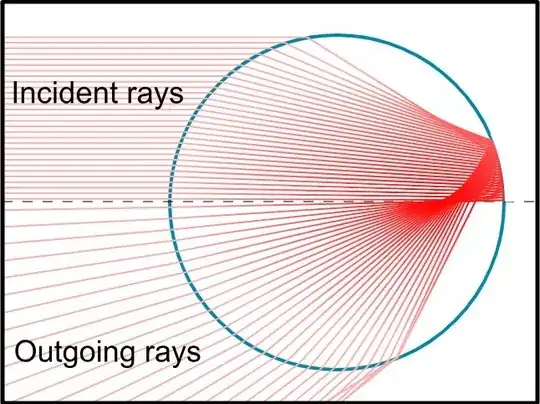This figure is given in wikipedia to explain rainbow formation,
l know that if light travels from denser medium to rarer medium and if angle of incidence is greater than crictal angle light will reflect back frmo inner surface of drop, but here in this figure a parallel ray(paraxial rays) to diameter is shown as reflecting back from surface.
It is clear from figure that they do not make angle more than critical angle,
I want to know whether it is partial reflection or total internal reflection of paraxial rays.
https://en.wikipedia.org/wiki/Rainbow
This sentence is also given in wikipedia:
The overall effect is that part of the incoming light is reflected back over the range of 0° to 42°, with the most intense light at 42°.
